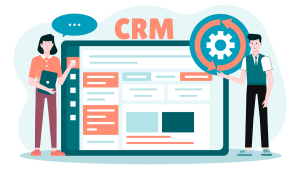When a business invests in a Customer Relationship Management (CRM) solution like Microsoft Dynamics, it invests in the organization’s smooth running and efficiency. A well-maintained CRM will give everyone in the business, who needs access to customer data relating to just about any function, the right information at the right time. Conversely, a poorly maintained CRM can be a disaster.
To understand what a healthy CRM strategy looks like, we should perhaps first take a look at some bad CRM habits that lead to the availability of multiple versions of the truth (or untruths) within your organization.
Bad CRM Habits
- Lack of training: A CRM system can be an unwieldy sight to the untrained eye. When your colleagues haven’t been equipped with the right CRM skills, they’ll either fail to use the system to its full potential, fill it with confusing and potentially useless data, or just not use it at all. This lack of training will result in duplicate accounts, poorly kept records, and lost opportunities.
- Manipulating data outside of the system: The moment you create a spreadsheet and start playing around with your data is the moment you lose any integrity in your data. Likewise, the moment a spreadsheet gets emailed around the office or is uploaded onto a USB drive to be manipulated later, is the start of a process that can only be described as chaos. It should also be remembered that unauthorized use of spreadsheets and USB drives can present a significant security threat to your business.
- Disconnected systems: When your Martech stack doesn’t quite stack up and fully integrate with your CRM system, you’ll never have a clear understanding of your customers’ data. When this happens, you’ll be left with a ton of unreliable data stored across multiple silos. At the very least, this will create work for your colleagues as they manipulate data to suit their individual platforms’ needs (see #2) and make pulling reports with any degree of accuracy an almost impossible task. At the very worst, this might also mean your data is no longer compliant with global regulations like GDPR.
These bad habits can lead to multiple problems. First, marketers may not be able to target specific customers with focused campaigns based on particular actions. Then, sales teams may not know precisely where their prospects sit in the sales funnel resulting in the poor management of their pipeline. Finally, senior management may not have the information they need to pull reports required to create the forecasts and set the strategies your business needs to progress.
Once you understand the damage poor CRM hygiene can cause, you’ll understand the importance of resolving those bad habits.
Build a CRM First Strategy
A CRM first strategy recognizes the fact that data needs a good home. Because your CRM system will be accessed by many different departments within your organization (marketing, sales, client services, accounting, etc.), it should be recognized that the data stored in your CRM system is the only view of the truth in your organization.
Your CRM first strategy starts with high-quality data. This will undoubtedly be quite an administrative task as data points are collected and compiled from across the organization to create that single view of the truth. Once this foundation has been completed, every subsequent piece of data collected and added to your CRM system must conform to the same high standards as the original data collection.
The person charged with administrating your CRM systems has to be meticulous to ensure those old bad habits don’t creep back in and corrupt your data.
Native Applications
In a perfect world, your Martech stack will be fully integrated with your CRM system to ensure the data across all your technology platforms remains healthy.
For users of popular CRM systems like Microsoft Dynamics, this is made more accessible by the availability of numerous integrated applications made available in Microsoft’s AppSource marketplace. This includes the emfluence Marketing Platform, which enables users of Microsoft Dynamics to manage their marketing automation, email marketing, social media campaigns, and associated landing pages, surveys, and contact scoring within the Dynamics environment.
This CRM first strategy can then be developed further through the creation of custom apps built using Microsoft’s Power Apps platform. When creating any apps that touch customer data, your CRM administrator must have a complete view of the project to ensure the integrity of your CRM first strategy.
In Conclusion
Keeping your CRM data up-to-date and healthy will help every area of your business focus on the tasks they need to perform to drive your business forward. A successful CRM first strategy takes a lot of planning and discipline but will always pay dividends in efficiency as your high-quality data is used across multiple channels.
Want to learn more about the emfluence Marketing Platform and how it can connect to your CRM for a more data-driven marketing strategy? Contact us at expert@emfluence.com!


